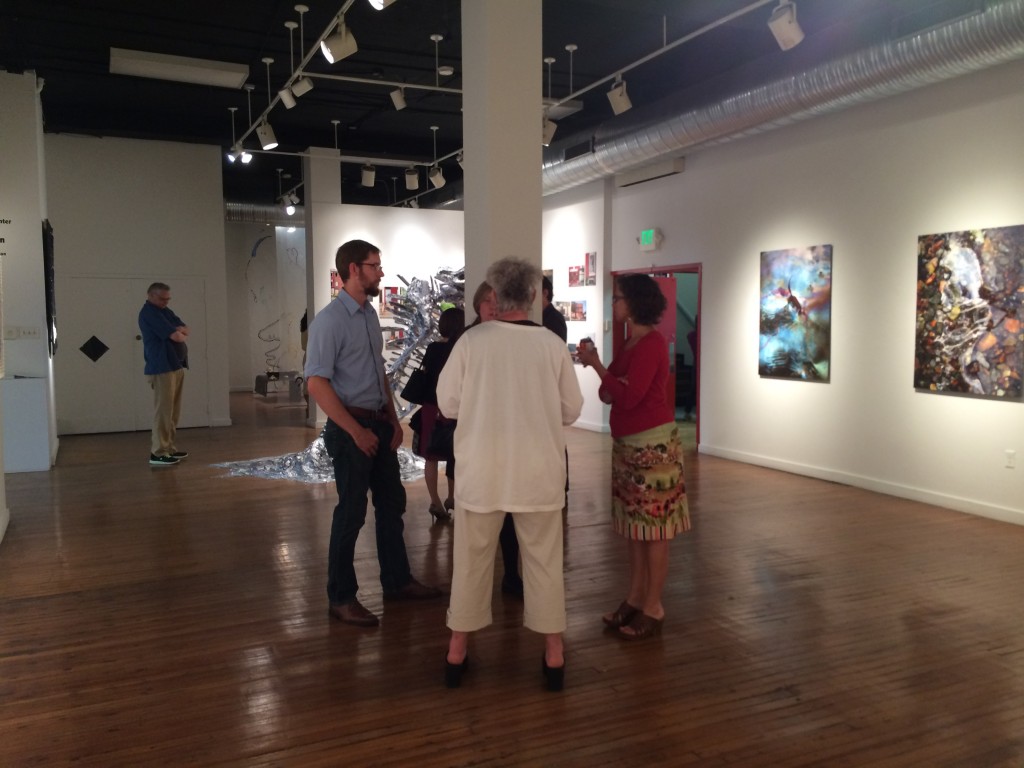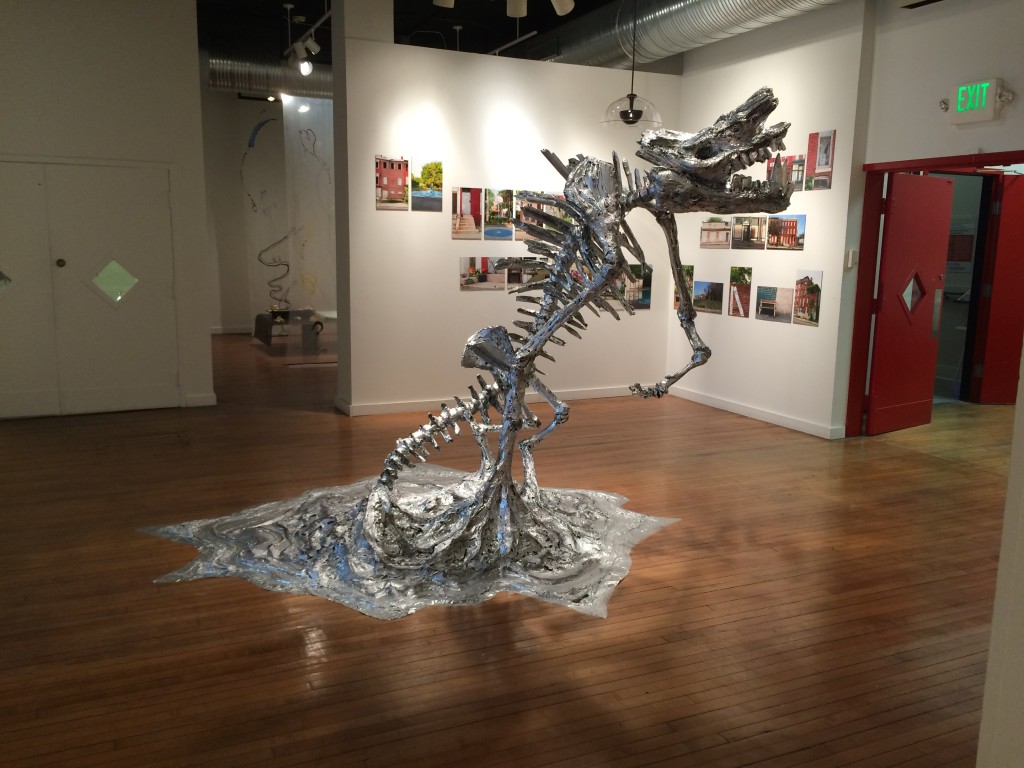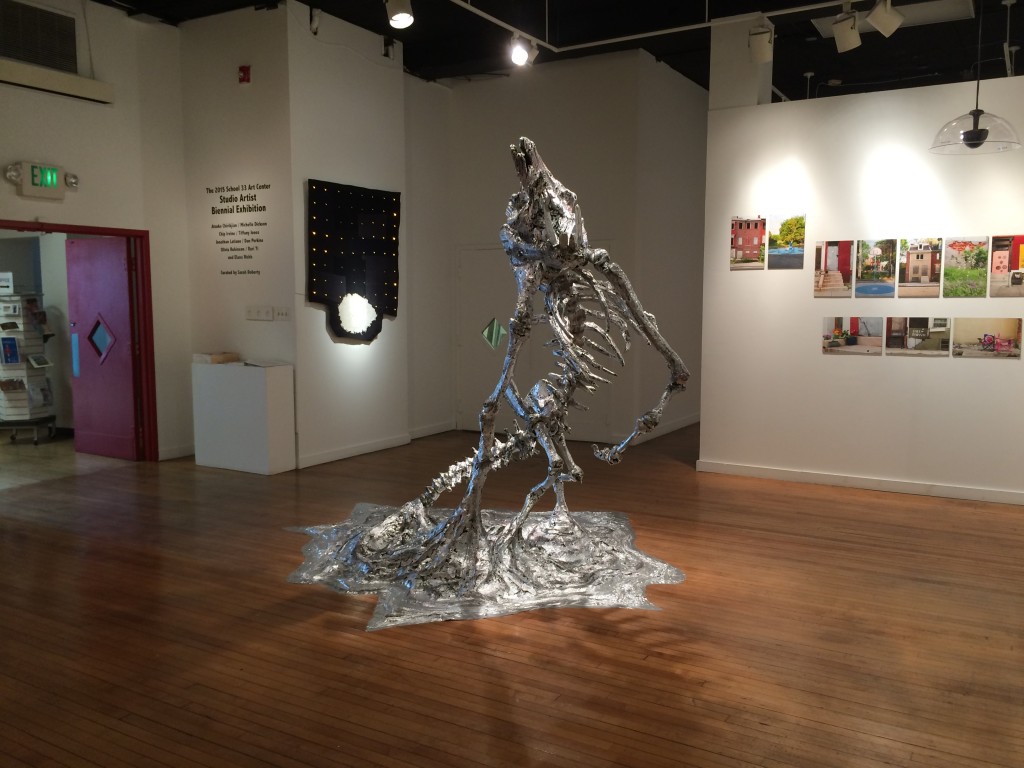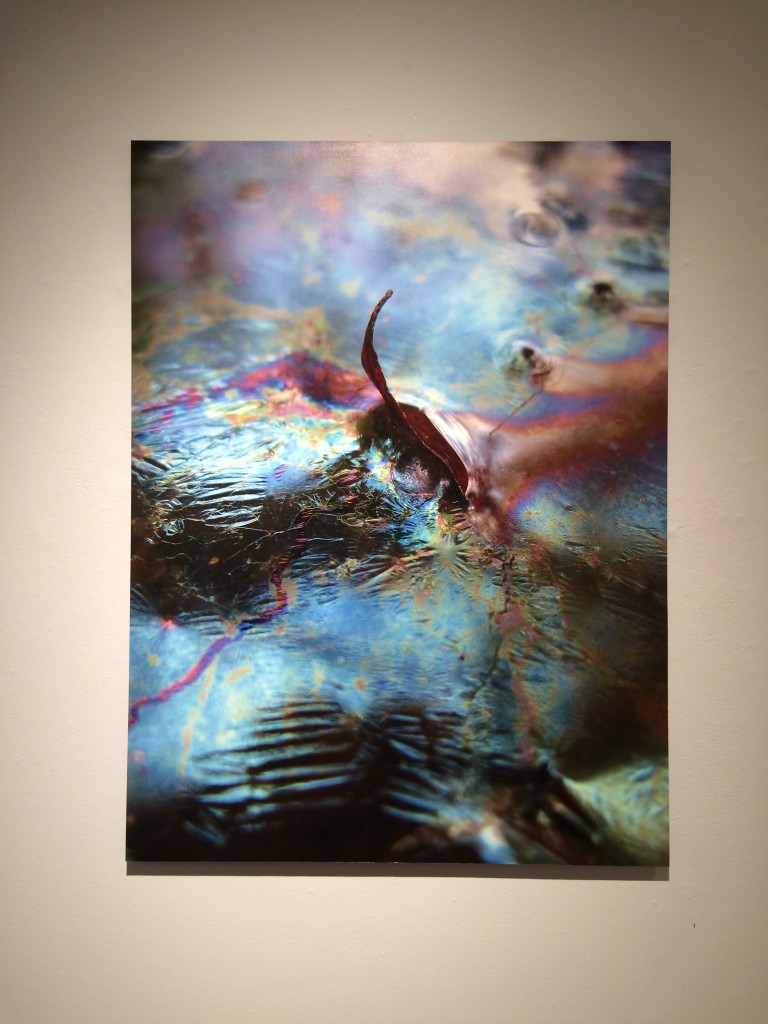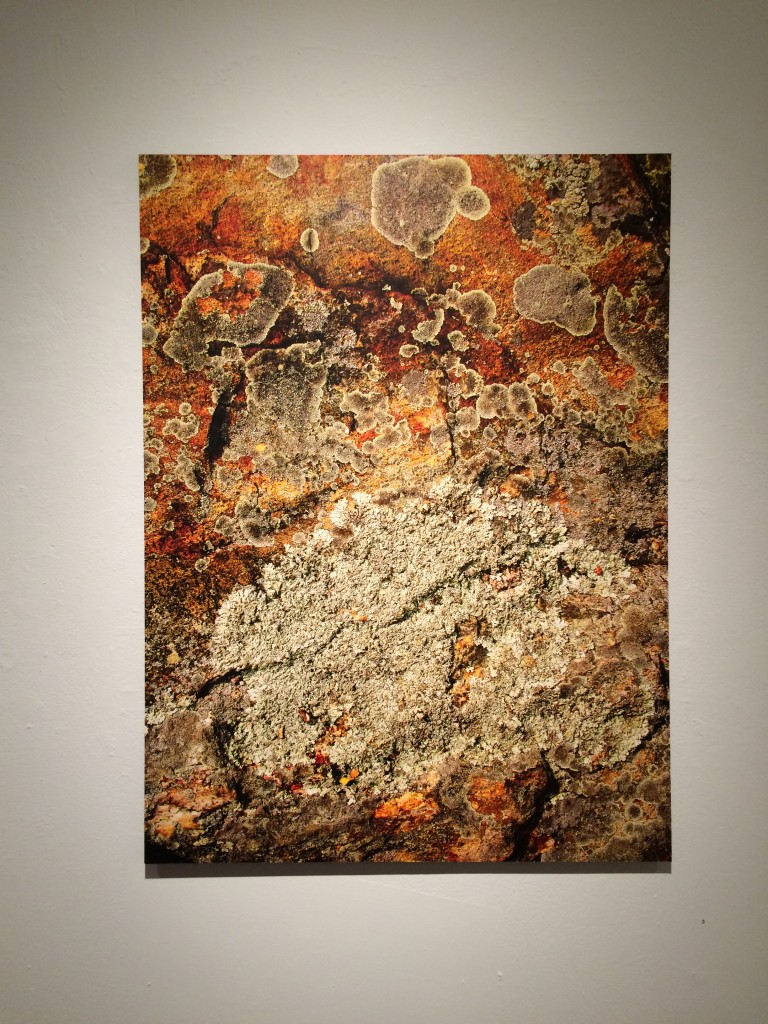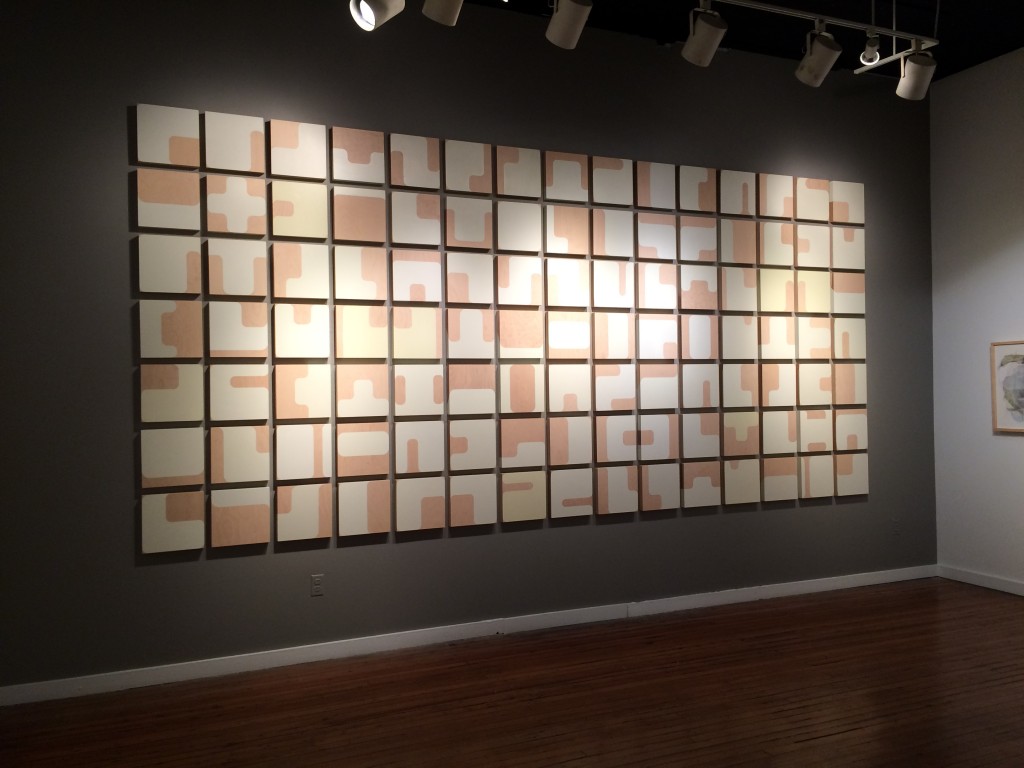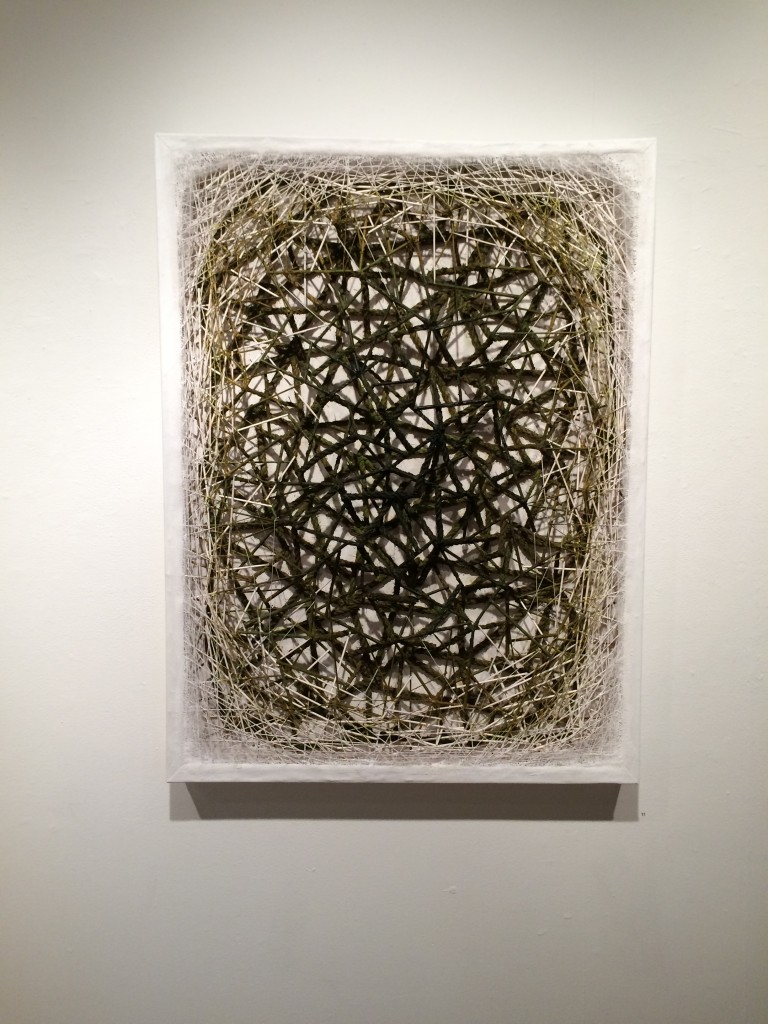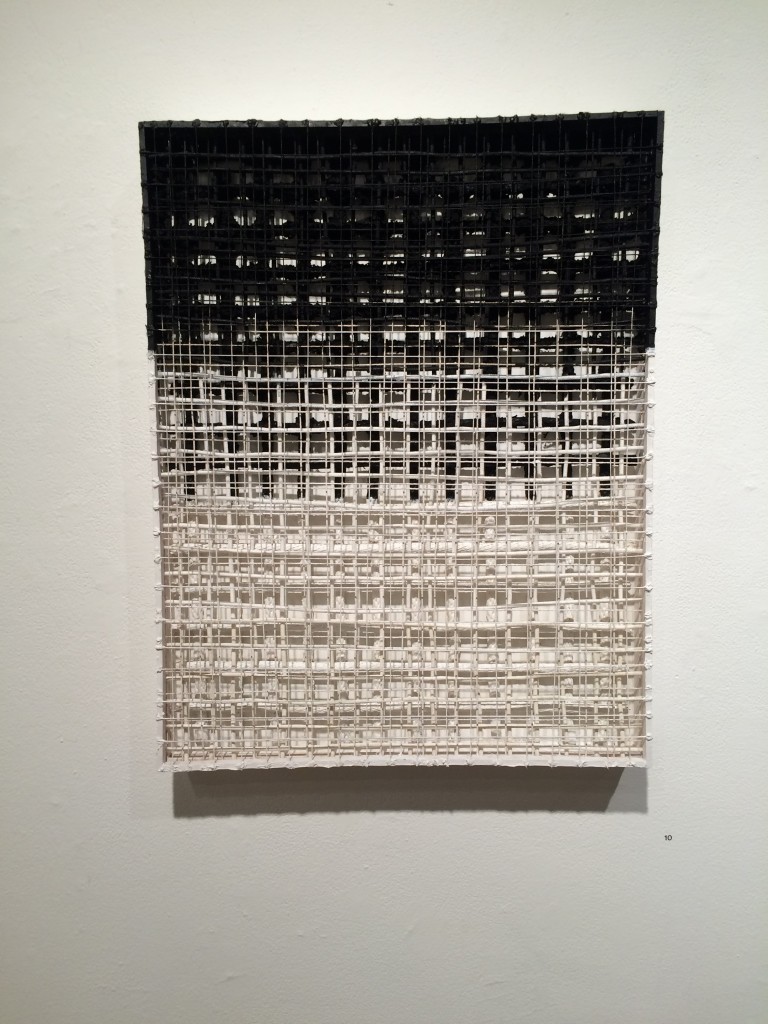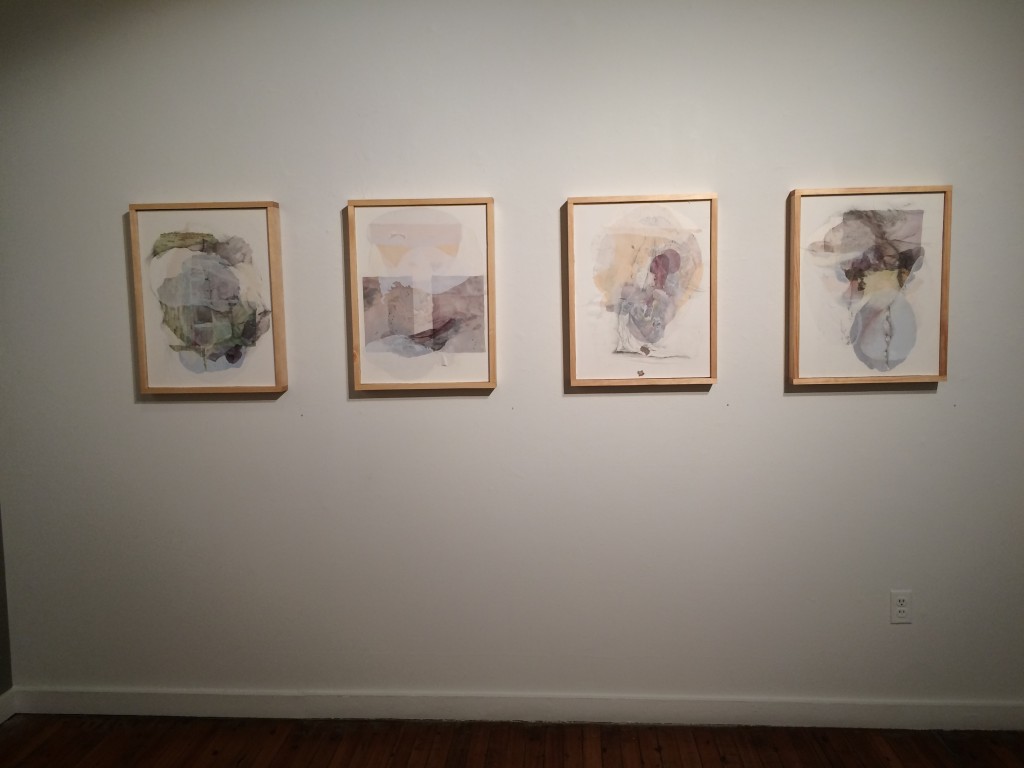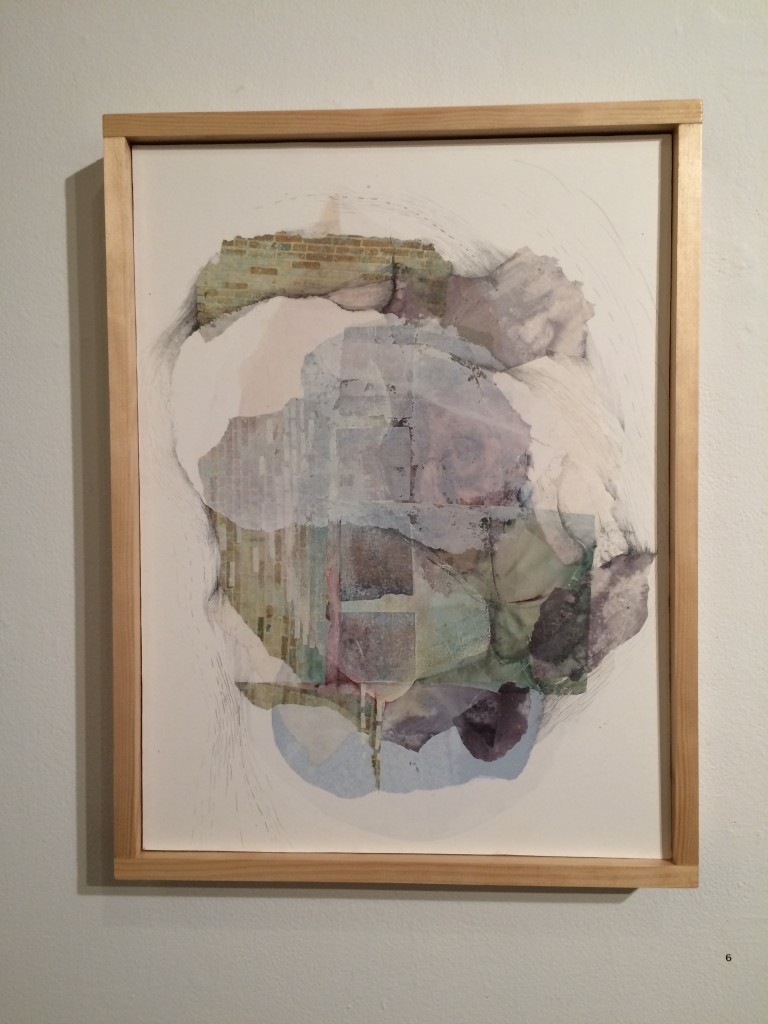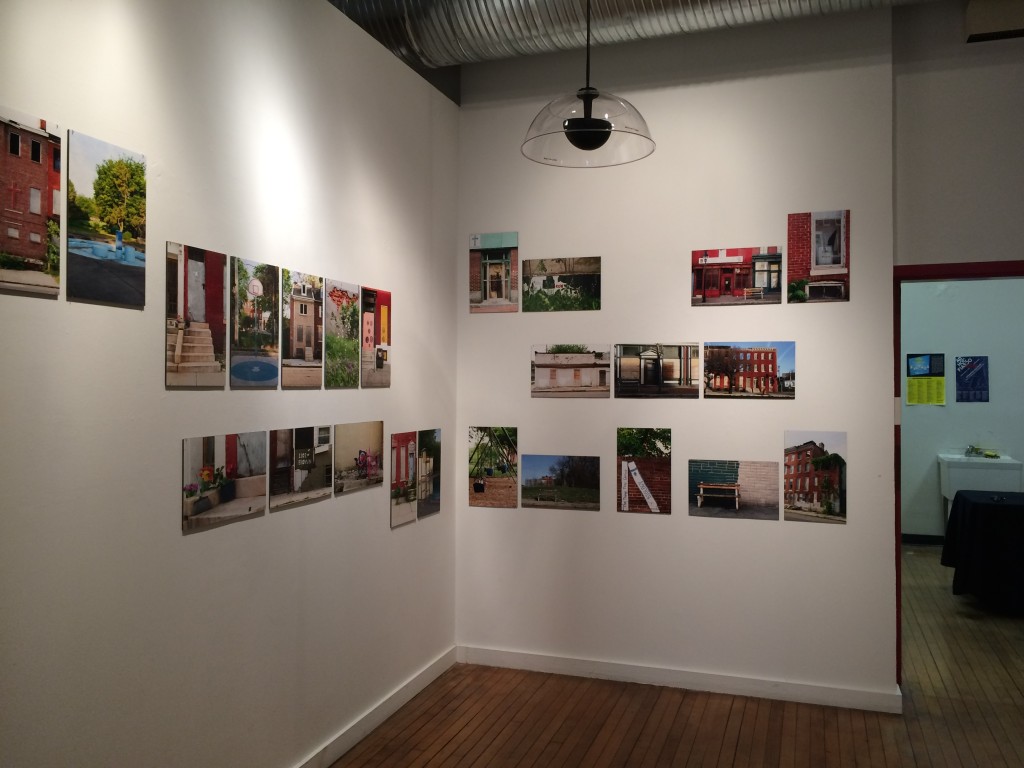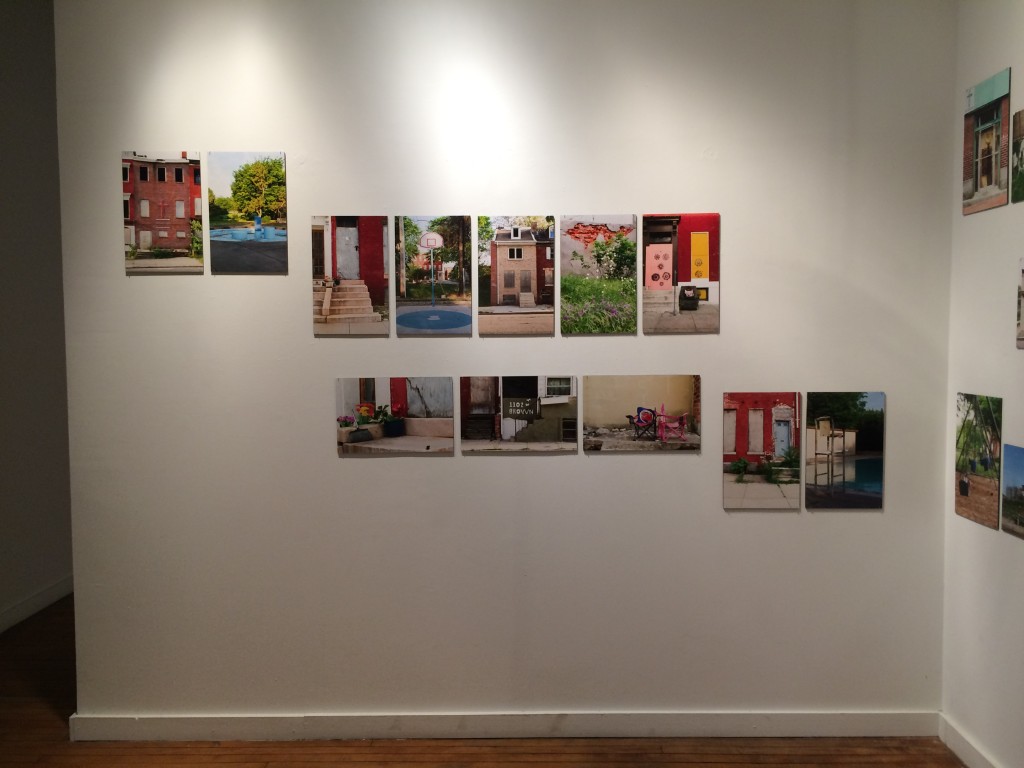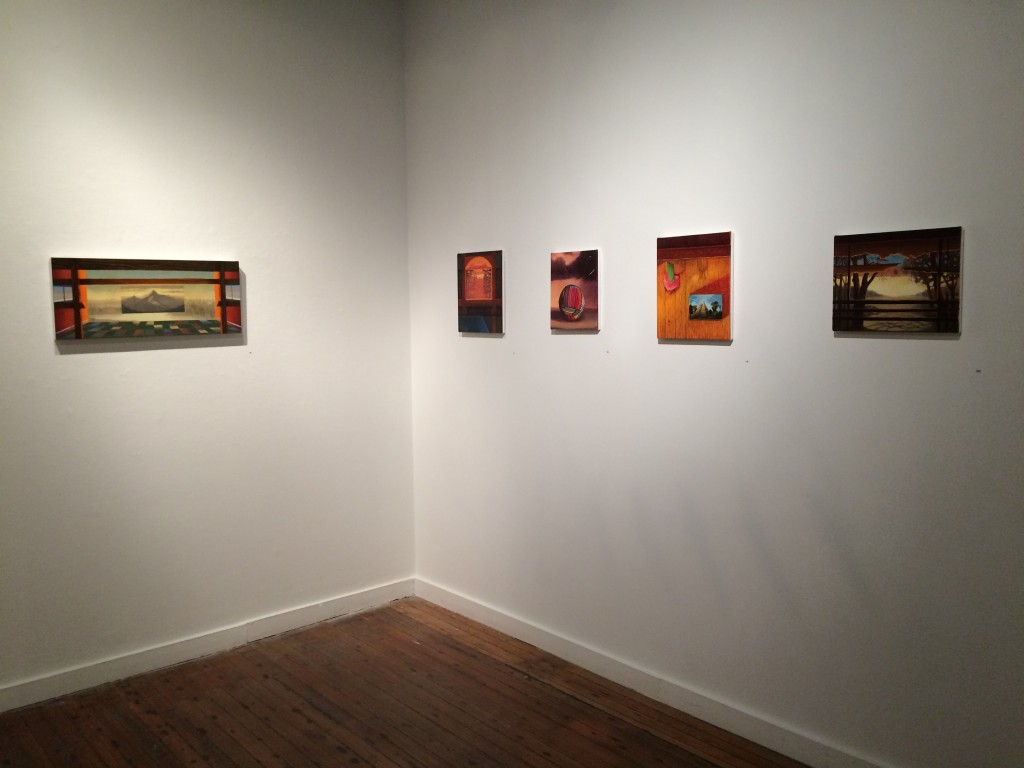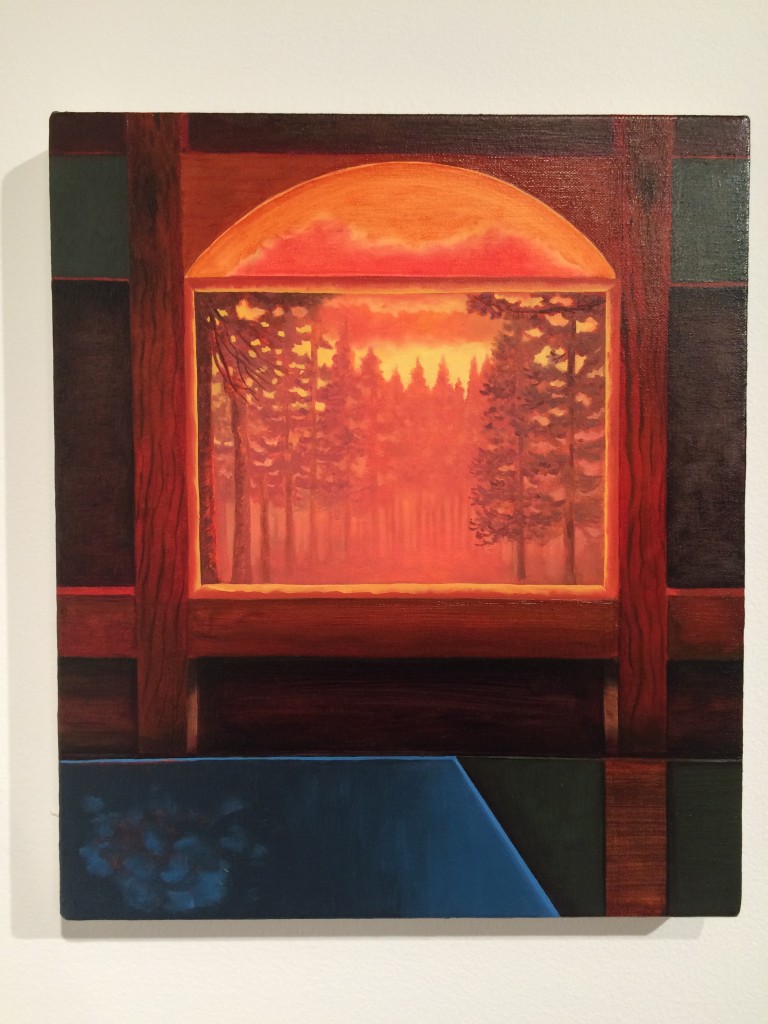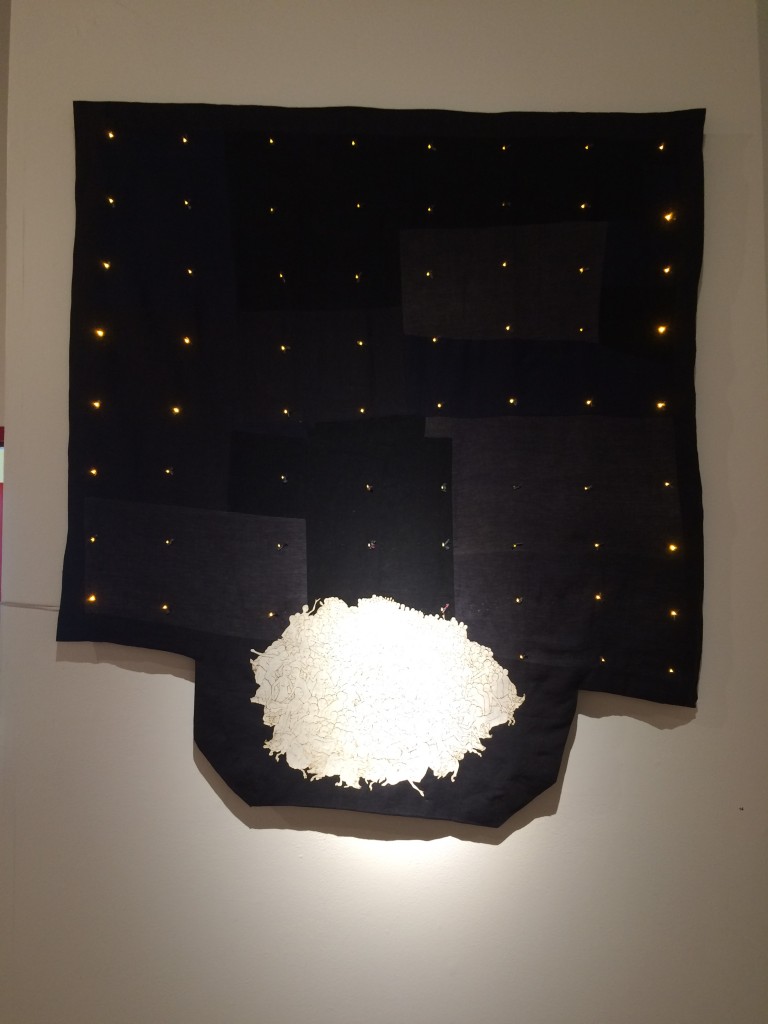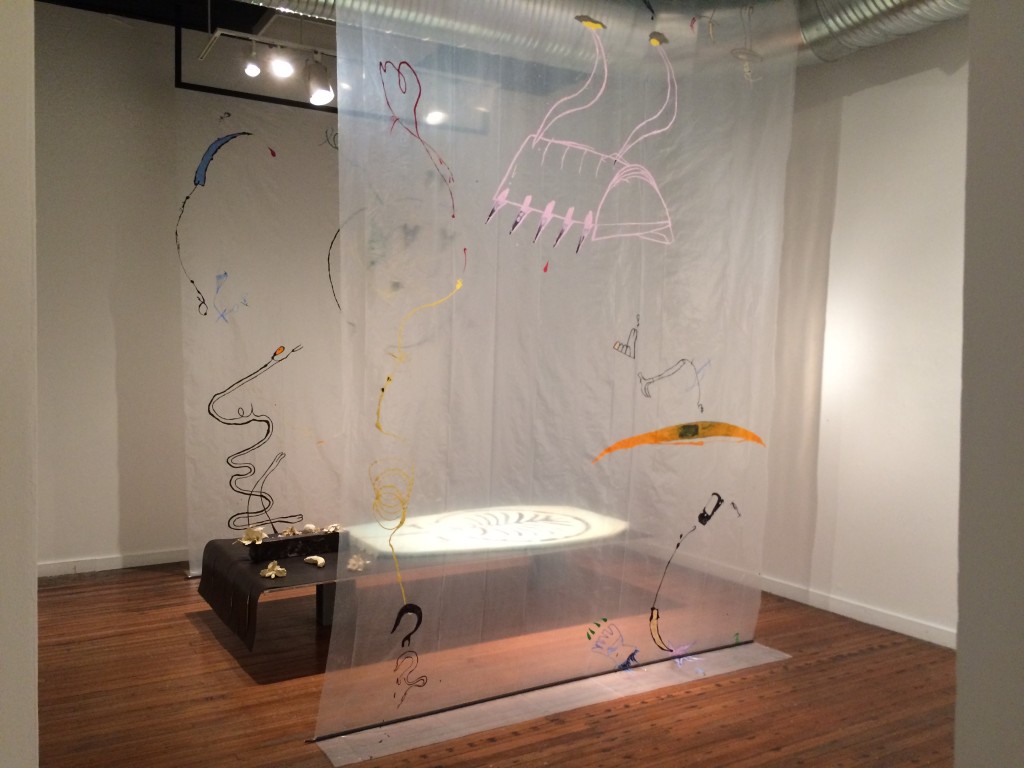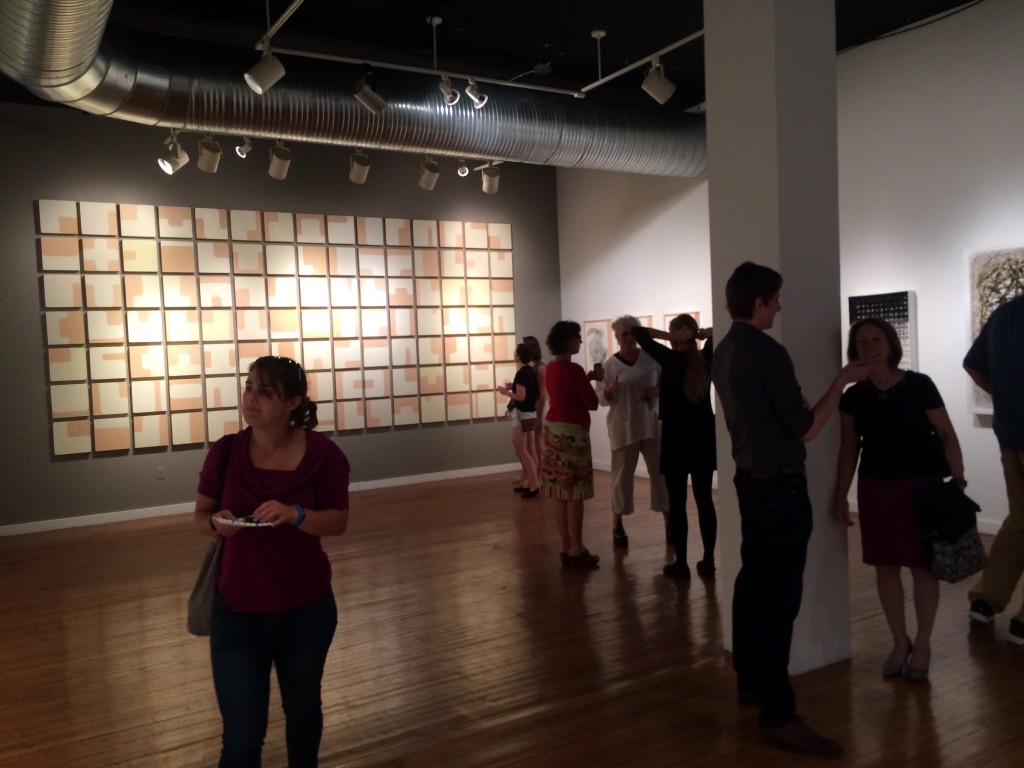This past Friday, June 19th, I attended the opening of three (yes, THREE!) exhibitions at School 33 Art Center, which also served as the Kickoff event for the Artscape Gallery Network. It was a lively opening indeed! The School 33 Main Gallery houses the Studio Artist Biennial Exhibition, with solo exhibitions “Pentimento” and “Waiting for Something to Happen,” in the Members’ Gallery and Project Space on the second floor, respectively. These exhibitions are now on view until August 22nd, 2015. In this blog post I am sharing photos from the Studio Artist Biennial and discussing some of the works I saw – posts about the two additional solo exhibitions to come! Click through for more photos and my thoughts on the exhibition.
Upon entering the School 33 Main Gallery, Jonathan Latiano’s monumental sculpture, “Make it Beautiful, Make it Horrible,” hit me in the face with not only it’s massive scale, but with its reflective chrome finish. Jonathan’s work is consistently not only intellectually provocative, but aesthetically beautiful. Jonathan told me that this piece is about the automobile industry and people’s relationship with oil – which he describes as “liquefied dinosaurs from millions of years ago.”
Chip Irvine’s photographs are intriguing due to their quick draw and slow reveal. Meaning, the colorful, sensuous beauty of the photographs serves to pull the viewer in, but not until the viewer reads the titles and contemplates the imagery do they realize the images are of typically ordinary subjects. Chip’s photographs encourage us to find beauty in the little details.
Ruri Yi’s massive installation of miniature-scale paintings, “Language of Nature,” which can be found along the back wall, are understatedly beautiful in their simplicity, but clever in how she’s incorporated the wall they’re displayed on into the artwork. I would never think that simply painting a wall light grey would make such a difference in an artwork, and transform an otherwise straightforward display of paintings into a full-on installation. Her paintings, although all similar in color and style, are all slightly different, and give me the sense that I am looking at different moments, or glimpses throughout one continuous story.
Atsuko Chirikjian’s sculptures are heavily self-referential artworks that talk about the structure, the weaving of threads that lies behind every painted canvas. I like how clearly you can see the artists’ hand in these sculptures, through the imperfections in the weaving and the flaws in the wooden frame. Her fiber sculptures also bring to mind the tension between notions of “craft” and “fine art” – why is the making of the canvas considered a “craft,” but the painting that goes on that same canvas thought of as “fine art”? Atsuko’s works are understated and powerful pieces.
Michelle Dickson’s “Untitled Mnemonic” series is an investigation of memory, like much of Michelle’s body of work. The layering of imagery – some clear and colorful, others faded and obscured – echoes this theme. This series also very process-heavy, involving Michelle building up the images through creating, responding, taking away, and re-establishing pieces to arrive at the final impression. The images are a result of this process, edited and transformed over time. I find Michelle’s series to reflect a certain familiarity – in the way that we all experience memories in a similar way – but also uncertainty in how it forces the viewer to search for images buried under layers of changes.
Tiffany Jones’ piece, “Beyond the Bench,” which is a combination of photographic installation and audio projection, addresses the topics of personal as well as communal identity, specifically in West Baltimore. This photographic series challenges the irony of public city benches throughout Baltimore that are branded with the slogan “The Greatest City in America,” while surrounded by dilapidated and underprivileged neighborhoods. A project she began during her undergraduate career, Tiffany revisits this issue in the wake of recent events that re-ignited discussions of violence and drug problems in Baltimore. To me, this series sparked empathy and gives the viewer a sense of tangibility and urgency in addressing these issues.
Around the corner, Dan Perkins’ paintings transport us to a romanticized, too-perfect version of the great outdoors. They echo themes seen in nineteenth century traditions of landscape painting, such as the Hudson River School and Romanticism – but with a modern twist due to the presence of newer technologies, furniture and structures. I personally enjoy how although none of Dan’s paintings include a figure, a human presence is felt in each of his paintings. They almost act as snapshots, allowing the viewer to step into his imagined world of never-endings dawns and dusks, forests and lakefronts.
Olivia Robinson’s illuminated quilt, “Horde,” cleverly combines the traditional – textile craft – with LED technology to create a visually surprising and intellectually stimulating piece. I personally enjoy how this piece, as well as many others’ in Olivia’s body of work, combine the crafty practices such as sewing and quilt-making, commonly associated with femininity, with technology, which is definitely seen as being on the more masculine side of the spectrum. Olivia’s work is also heavily research based, which adds another layer of interest to her otherwise beautiful fiber artwork.
Occupying much of the side room is Elana Webb’s expansive installation, “Palm Jumeirah.” Elana’s work addresses the tension between her own Midwestern Americanism and an attraction to the concept of the tropical and foreign paradise. Her work, including this installation, combines iconography that comes from real experiences and manufactured, dreamed notions of “paradise.” This piece in particular, for its massiveness in scale and physical arrangement evoke in me the sense I am looking at a shrine or altar to the human-made archipelago of the Palm Jumeirah Islands of Dubai.
This exhibition is a truly wonderful showcase of a diverse array of talented, local artists. Although the Main Gallery is not the largest space, I spent well over an hour exploring and admiring all of these artists’ work. Absolutely stop by School 33 sometime before August 22nd if you didn’t make it to the opening reception – this is not to be missed! Also, the artists’ studios are all located in the same building, so if a particular piece intrigues you, this is a great opportunity to connect and speak with an artist about their work in person.
To learn more about School 33, their exhibitions and their programs, please visit the School 33 homepage at: http://www.school33.org/
To find out more about any of these individual artists, please click their names in the article above to be directed to their portfolio websites.

